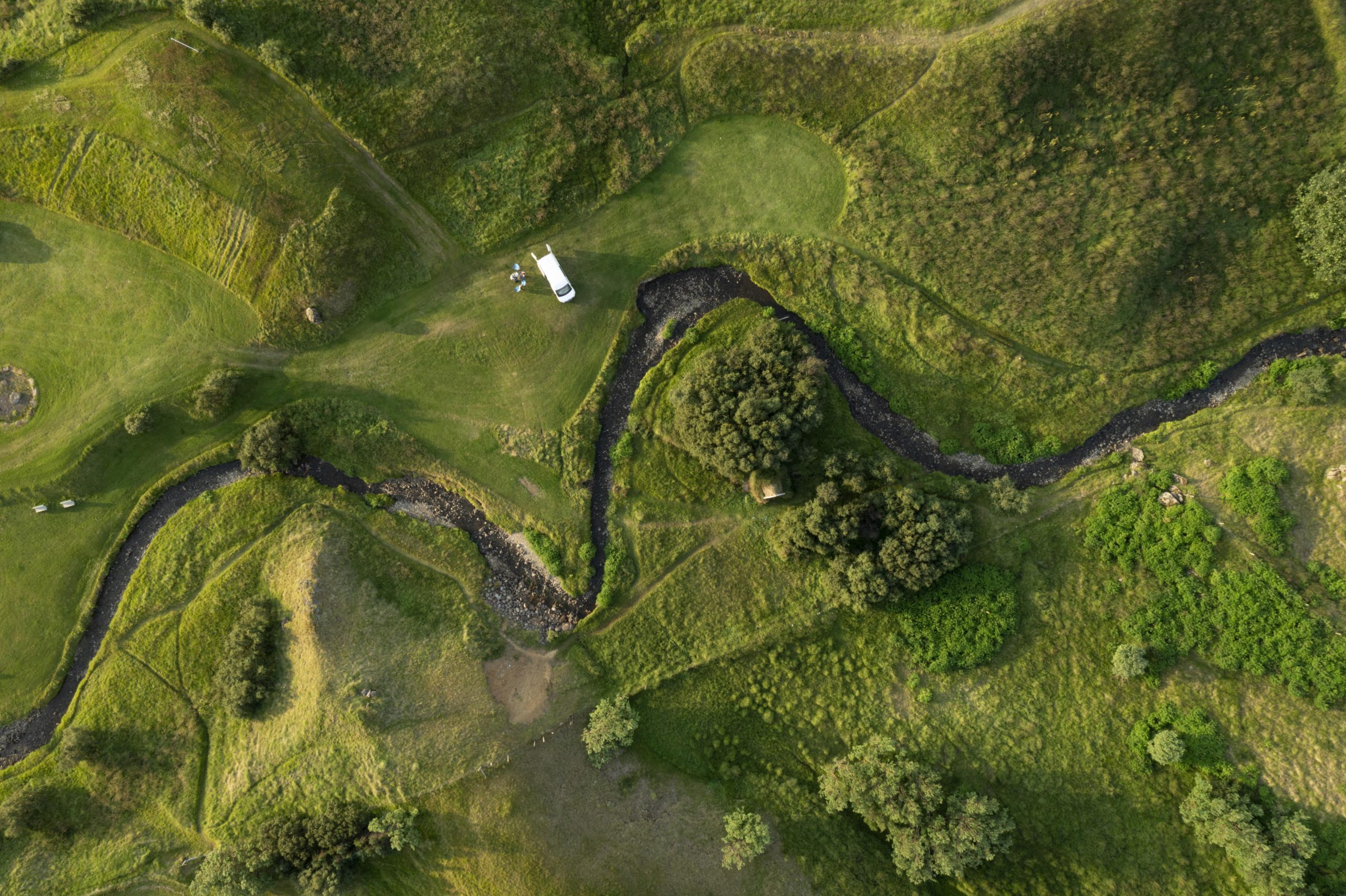Synopsis
Balancing real-estate value with memorable golf begins long before a tee is staked. A realty golf course architect must first decipher zoning grids, hydrology charts, and community-use overlays, then translate those layers into corridors that welcome both homeowners and golfers. In parallel, a golf design architect studies prevailing winds and soil permeability, ensuring that each fairway orientation works with, not against, the landscape. Water remains the great mediator: a seasoned golf course water bodies designer can turn mandatory detention basins into strategic hazards that enliven play while storing runoff. Throughout concept review, a top golf consultant audits fiscal projections and buildability, confirming that vision and budget remain aligned. As the drawings evolve, an integrated golf architecture & construction firm models cut-and-fill balance, trimming earth-haul while preserving key landforms. The outcome is a resilient golf course design that elevates real-estate premiums, safeguards the watershed, and rewards strategic shot-making—all achieved without sacrificing ecological integrity or the bottom line.
Table Of Content
- The Real-Estate Lens on Modern Routing
- Integrating Hydrology into Hazard Strategy
- From CAD Lines to Contours: Design Translation
- Budget, Buildability and the Consultant’s Checkpoints
- Earthworks Efficiency and Carbon Awareness
- Ecological Finishing: Turf, Trees and Pollinators
- Measuring Long-Term Success Beyond Handover
- NWD Golf’s Integrated Approach to Land and Links
The Real-Estate Lens on Modern Routing
Demand-driven land planning often begins with housing lot grids, yet a realty golf course architect views those grids as only one layer in a multitier puzzle. By overlaying sight-line studies onto parcel plans, designers carve corridors that protect back gardens from stray shots while gifting owners panoramic green vistas. Working hand in glove, the golf design architect aligns tee complexes to natural ridges so that drives launch toward distant skylines instead of rooftops. This choreography benefits the municipality too: green belts double as storm-water conveyance zones, reducing street-drain loads during monsoon peaks. The synergy proves that thoughtful routing can reconcile commercial imperatives with compelling golf.
Integrating Hydrology into Hazard Strategy
Site water rarely arrives in perfect quantities; it either floods or vanishes. Enter the golf course water bodies designer, who sizes interconnected lakes to detain flash flows then feeds reclaimed water back into precision irrigation grids. By shaping shorelines to nudge golfers into risk-reward decisions, the designer turns a civil-engineering necessity into a memorable playing feature. Meanwhile, collaboration with a top golf consultant ensures detention volumes meet regulatory thresholds without bloating construction budgets. The resulting water network becomes the course’s aesthetic spine, ecological refuge and drought buffer in one.
From CAD Lines to Contours: Design Translation
Digitised routing is theory; field-staked lines are reality. A veteran golf design architect works alongside bulldozer operators to translate two-dimensional polylines into flowing landforms. Here, micro-topography matters: a one-metre rise can pivot an entire angle of attack into the green. The golf architecture & construction firm equips shapers with GPS blades that adhere to sub-grade models within centimetres, ensuring grading efficiency and design fidelity. In this dialogue between screen and soil, artistry meets accuracy to create playing surfaces that feel carved by nature yet read true for strategy.
Budget, Buildability and the Consultant’s Checkpoints
Dream routings falter when cost models ignore market forces. A top golf consultant periodically freezes design iterations to run buildability audits—scrutinising haul distances, liner specifications, and turf conversions. These checkpoints keep the realty golf course architect informed of financial inflection points where minor contour tweaks save six-figure sums. Such discipline underwrites a golf course design that is deliverable, not just desirable.
Earthworks Efficiency and Carbon Awareness
Cut-and-fill equilibrium remains the golden rule of sustainable shaping. By pairing lidar data with mass-haul software, the golf architecture & construction firm predicts where native soil can be reused on-site, sparing fuel and emissions. The golf design architect preserves specimen trees as windbreak anchors, reducing the need for artificial mounding. Each choice lessens carbon output while enhancing the natural feel of shot corridors.
Ecological Finishing: Turf, Trees and Pollinators
True stewardship extends beyond grading. Designers specify warm-season grasses that thrive on reduced inputs, while out-of-play zones are seeded with native wildflowers to boost pollinator diversity. Shoreline shelves built by the golf course water bodies designer invite aquatic plants that clarify water and shield fry from predators. The course thus becomes a living laboratory for biodiversity, proving that premium play and ecological uplift can coexist
Measuring Long-Term Success Beyond Handover
Opening-day photographs capture aesthetics, yet success must also be tracked through maintenance KPIs: irrigation efficiency, bunker playability, and turf health across seasons. Data dashboards configured by the top golf consultant allow superintendents to benchmark inputs against performance metrics. When fairways remain firm under heavy rain and greens endure summer scorch with minimal syringing, design intent has translated into operational reality.
NWD Golf’s Integrated Approach to Land and Links
NWD Golf approaches every commission through a single guiding lens: land first, golf second, branding third. Our planners, shapers and agronomists work as one, ensuring decisions made in feasibility workshops echo through final grow-in. By housing a golf architecture & construction firm within the same studio ecosystem, we anchor accountability from first sketch to last sod.
NWD Golf’s Service Matrix in Action
Feasibility studies illuminate zoning constraints; site analysis unpacks soil hydraulics; master-planning shapes corridors that lift real-estate premiums; detailed design refines greens to millimetre accuracy; construction supervision guarantees that every bunker edge mirrors the approved model. Whether consultative or turnkey, our methodology safeguards capital while delivering courses that respect water, habitat and the golfer’s imagination
What makes a realty golf course architect essential for mixed-use developments?
A realty golf course architect understands both zoning economics and strategic play. They align corridors with parcel grids, ensuring safety setbacks, view premiums, and storm-water management work in unison. By coordinating early with planners and surveyors, they save re-design cycles later. Their dual fluency in urban planning and golf strategy creates developments where housing and fairways enhance each other rather than compete, ultimately boosting long-term asset value.
How does a golf design architect adapt routing to challenging topography?
A golf design architect begins with lidar-rich terrain models, identifying natural ridges and drainage lines. They route holes along contour spines to minimise cut, preserving land character. Strategic tee placement leverages elevation changes for visual drama while maintaining walkability. By embracing topography rather than flattening it, the architect delivers strategic variety and environmental sensitivity in equal measure.
Why is a golf course water bodies designer important for sustainability goals?
Water bodies designers calculate detention volumes, liner needs, and littoral planting, turning storm-water obligations into course features. Their expertise improves water quality, supports habitat, and supplies irrigation reserves, cutting potable demand. When integrated early, these reservoirs function as aesthetic focal points and risk-reward hazards, blending strategy with stewardship.
What role does a top golf consultant play in cost control?
A top golf consultant bridges creative ambition and fiscal reality. They model build costs, test maintenance budgets, and validate agronomic specs before contracts are signed. Their objective oversight helps teams avoid scope creep, choose value-engineered solutions, and keep stakeholder expectations aligned from concept through grow-in.
How does a golf architecture & construction firm ensure design integrity on site?
By uniting design and build services, such firms maintain a single chain of accountability. GPS-enabled earthworks follow digital terrain models precisely, while on-site architects monitor shaping to safeguard intent. Their integrated teams adjust details in real time, resolving unforeseen soil or drainage issues without compromising strategic goals, ensuring the finished course mirrors approved plans.
Vijit Nandrajog holds a master’s degree in Golf Architecture from Scotland and has led design solutions across Asia, Africa, and the Middle East for nearly two decades. Known for aligning environmental stewardship with real-estate value, he serves on multiple regional golf boards and contributes regularly to industry journals. At NWD Golf, Vijit guides integrated land-planning strategies that harmonise community growth and compelling play.
- Vijit Nandrajoghttps://nwdgolf.com/blogs/author/vijit-nandrajog/
- Vijit Nandrajoghttps://nwdgolf.com/blogs/author/vijit-nandrajog/
- Vijit Nandrajoghttps://nwdgolf.com/blogs/author/vijit-nandrajog/
- Vijit Nandrajoghttps://nwdgolf.com/blogs/author/vijit-nandrajog/


